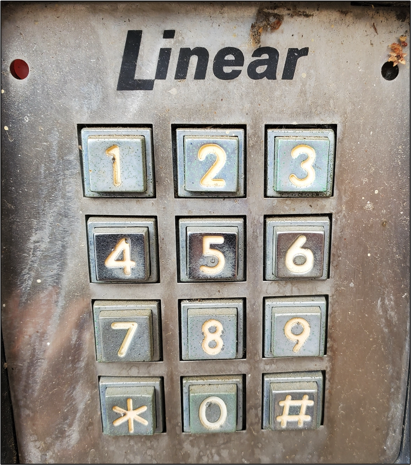Tales From the Pick: Intro to Physical Security Tools

Looking to get into physical security? Not sure what you need to get started? Look no further.
What are Physical Security Assessments?
Physical security assessments evaluate an organization’s physical security measures to identify potential risks and vulnerabilities that could compromise the safety and security of its people, assets, and facilities. The assessment typically involves a combination of physical inspections, bypasses/lockpicking, tailgating, and access control abuse to name a few. This assists in assessing the effectiveness of existing security measures and identifying areas for improvement.
This is a basic list of tools, where to get them, and videos on how to use them. (Access controls and badge cloning aren’t included, but there may be a Part 2 in the future.)
Environmental Considerations
Awareness of your environment is crucial. Being aware of your environment could be the key to you not needing a key.

Sebaceous Oils
Let’s begin with a common bypass that is seen with keypads all over the world. Sebaceous oils. Sebaceous oils are simply oils from your fingers that could cause discoloration on a keypad. Anyone could use this to guess the correct combination. Below is an example. Can you guess the combination?

Congrats! You probably guessed correctly.
I’m Snow Excited!
Another use case Is simply looking around your environment for a way In. Here Is an interesting edge case where the snowbank was high enough to clear a barbed wire fence.

This doesn’t apply to just snow. It could be new construction with dirt or even pallets that are high off the ground.
Lock Bypasses
Why lock bypasses? It’s fast and usually easy. Low complexity and high impact is always valuable for a client. You don’t need to be a rocket surgeon to use these simple tools.
Traveler Hook
This can be purchased from MBUSA for $3.99. Also known as a shrum tool, this tool Is capable of bypassing dead latched locks. These locks are almost everywhere.
Often, the deadlatch plunger is not set properly. If not set properly, an attacker could simply insert the traveler hook in the door gap and push the locking mechanism in, opening the door in a matter of seconds. Check out this video from our friends at Covert Instruments.
Knife Bypass
A knife bypass tool is another simple bypass that could be used on certain padlocks. It’s as simple as sticking the bypass tool into the lock, bypassing the locking mechanism. You can also use this tool to decode combination locks and file cabinets. This tool can be found at Sparrows for $14.95.
Wafer Key Bypass
Warded locks, often located outside of a facility to secure power generators and other valuable assets, can be picked with a wafer key. This product can be purchased from LockPickWorld for 18.99.
Double Door Tool
The double door tool allows an attacker to engage push bars located on double doors from the outside. You can purchase the DDT from Sparrows for $16.00.
Thumb Turn Tool
Otherwise known as a J-Tool, this tool can fit in between door gaps and twist the handle that twists the bypass mechanism, allowing an attacker to open the door from the outside simply by turning the knob. This tool can be purchased at Covert Instruments.
Under Door Tool
One of the oldest bypass tools, an under door tool can be leveraged by placing it under a door, rotating the hook, and pulling the door lever down. This tool can be purchased at Sparrows.
Lock Picks
Sometimes a bypass tool isn’t enough, and you’ll need to use lockpicks to gain access during an engagement. Bypasses are ideal, but you sometimes need to roll your sleeves up and do some picking. A good starter is the Tuxedo Kit from Sparrows. From personal experience, I would suggest purchasing additional tensioners for stubborn locks.
Here is a great example of a mica shim not working:

Next, I did a little bit of picking and voila!

Lock Pick Belt Ranking
If you have never picked a lock, aren’t someone who performs physical security engagements, or are just interested in locksport… there Is a Reddit post that has a belt ranking system from white belt all the way to black belt. It contains locks for each belt and criteria to be ranked. It’s a fun thing to do in your free time (or maybe during a meeting that you aren’t actively engaged in).
Here are a few locks to get you started:
- White Belt – Abus 45
- Yellow Belt – Master Lock 130
- Orange Belt – Master Lock 150
In Closing (the door…)
There you have it! Some simple tips and tricks to get your started in your physical security journey. All it takes is the right tools and a little know-how.
Ready to learn more?
Level up your skills with affordable classes from Antisyphon!
Available live/virtual and on-demand

